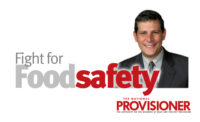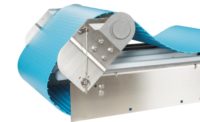Historically, the meat industry has been a place where hard work could result in upward movement within a company. Many supervisors, managers and executives can trace their careers to the barns, coolers, slaughter floors, grinding operations and smokehouses that demand long hours and a strong back.
During the years they spend taking care of their hands-on, day-to-day duties, they learn how the production process runs — and they find ways to make it better.
Eventually, this gets them a supervisory job, in which they are responsible for making sure that safe, quality food is produced. They get out on the production floor regularly, but they have administrative duties to fulfill that require them to spend more time in the office.
As they continue to climb the company ladder, the time on the production floor becomes smaller and the administrative duties grow. The time spent in production earlier in their career serves them well — they are practical in their decision-making because they remember what it was like to do the day-to-day tasks.
As the years go by, less and less time is available to spend in the production areas of the plant. As a result, the time that a corporate manager spends in the production facility becomes more valuable. This is the time when a corporate manager can get a first-hand view of how their operation is running and the state of the morale within their facility.
Unfortunately, the view of the operation may not be completely accurate for the corporate manager.
Nearly every company that I have worked with has specific hard hat colors to identify the rank of company employees. This system works very well for the identification of personnel from different departments and different specialties, such as maintenance or training. But, it also serves as a clear marker that a high-ranking official is in the production facility.
It seems to be human nature to display the best behavior when the boss is present. The corporate manager is likely to see many happy employees that are working with a remarkable level of speed and efficiency. Hopefully this is an accurate assessment, but it may not be.
One workaround for this issue is to try to blend in. This trick will likely remind you of the television show “Undercover Boss.”
On my first-time humane-handling consultations, I typically request a scratched-up hard hat with the same color as the floor employees and a frock or uniform that matches as well. Next, I try to head out into the animal-handling facility without an entourage of management personnel, because this is a sign that something is different. I typically ask to be oriented to the layout of the facility and then spend some time shadowing and getting to know the animal handlers.
This is where a lot can be learned about the attitudes of the workers and their ideas for improving their work environment.
This same approach would work to give managers that typically do not spend much time in the production facility, but are responsible for making sure the company continues to run efficiently and profitably, a better view of the state of their business. Just to walk through the production facility while it is in operation in the disguise of a floor worker may give the manager a different view of their company. If nothing else, it gets them out of the office for a few minutes and back in touch with how they started in the industry. This can help them to see if the company they lead is operating in a manner that is reflective of their vision and values.
Many of us spend the majority of our careers trying to find ways to stand out from the crowd. We can become better leaders by learning when to blend in and be observant.





Report Abusive Comment